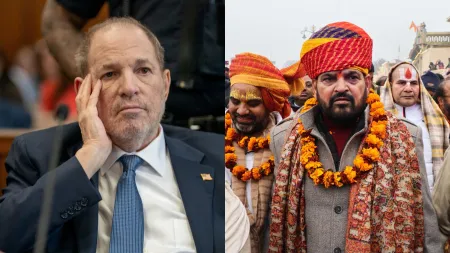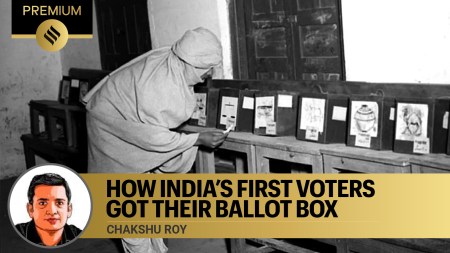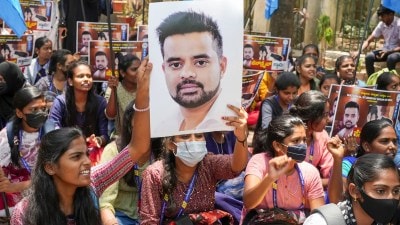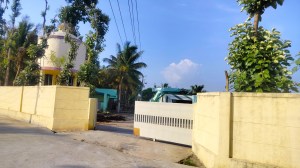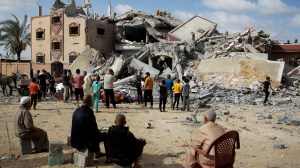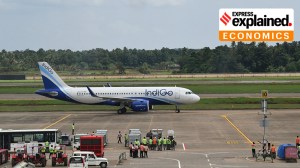- India
- International
‘You can’t trust anyone’: Russia’s hidden Covid-19 toll is an open secret
The official Russian coronavirus death toll of 102,649 as of Saturday — reported on state television and to the World Health Organization — is far lower, when adjusted for the population, than that of United States and most of Western Europe.
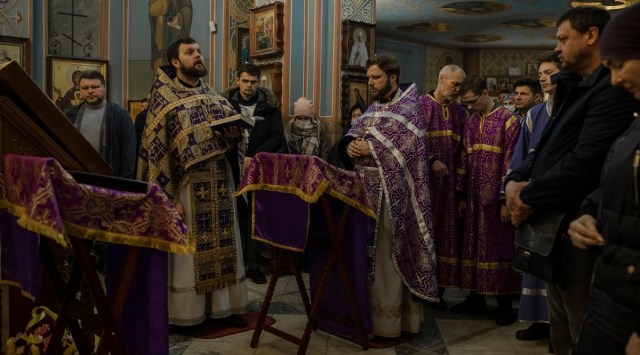 The Sunday service at a Russian orthodox church in Samara. (Photo: The New York Times)
The Sunday service at a Russian orthodox church in Samara. (Photo: The New York Times)She burst into the hospital morgue, and the bodies were everywhere, about a dozen of them in black bags on stretchers. She headed straight for the autopsy room, pleading with the guard in a black jacket, “Can I speak to the doctor who opened up my father?”
Olga Kagarlitskaya’s father had been hospitalized weeks earlier in a coronavirus ward. Now he was gone, cause of death: “viral pneumonia, unspecified.” Kagarlitskaya, recording the scene on her smartphone, wanted to know the truth. But the guard, hands in pockets, sent her away.
There were thousands of similar cases across Russia last year, the government’s own statistics show. At least 300,000 more people died last year during the coronavirus pandemic than were reported in Russia’s most widely cited official statistics.
Not all of those deaths were necessarily from the virus. But they belie President Vladimir Putin’s contention that the country has managed the virus better than most. In reality, a New York Times analysis of mortality data shows deaths in Russia during the pandemic last year were 28% higher than normal — an increase in mortality greater than in the United States and most countries in Europe.
“People didn’t know the objective situation,” Kagarlitskaya said. “And if you don’t know the objective situation, you are not afraid.”

For much of the last year, Russia has appeared more focused on the public relations and economic aspects of the pandemic than on fighting the virus itself. After a harsh two-month lockdown last spring, the government largely lifted restrictions last summer, a boon for public opinion and the economy, even as the disease spread more rapidly.
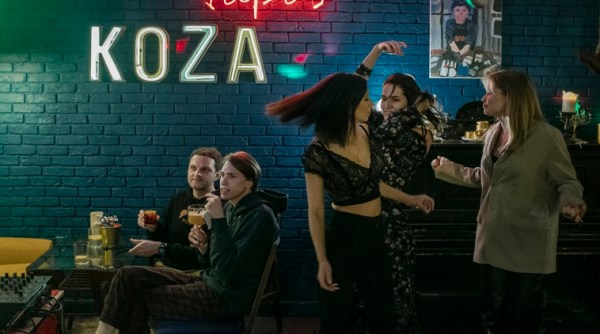 A restaurant in Samara, Russia. (Photo: New York Times)
A restaurant in Samara, Russia. (Photo: New York Times)
By the fall, Russian scientists had developed a Covid vaccine widely seen as one of the best in the world — but the Kremlin has put a greater emphasis on using the Sputnik V shot to score geopolitical points rather than on immunizing its own population.
Perhaps the starkest sign, though, of the state’s priorities is its minimization of the coronavirus death toll — a move that, many critics say, kept much of the public in the dark about the disease’s dangers and about the importance of getting a vaccine.
Asked to sum up 2020 at his year-end news conference in December, Putin rattled off statistics showing that Russia’s economy had suffered less than that of many other countries. Indeed, even as Europe introduced lockdowns in the fall and winter, Russians were largely free to pack nightclubs, restaurants, theaters and bars.
But Putin said nothing about the pandemic’s human toll — one that, in the dry monthly data releases of his own government’s statistics agency, is only now coming into full view.
The official Russian coronavirus death toll of 102,649 as of Saturday — reported on state television and to the World Health Organization — is far lower, when adjusted for the population, than that of United States and most of Western Europe.
However, a far different story is told by the official statistics agency Rosstat, which tallies deaths from all causes. Russia saw a jump of 360,000 deaths above normal from last April through December, according to a Times analysis of historical data. Rosstat figures for January and February of this year show that the number is now well above 400,000.
In the United States, with more than twice the population of Russia, such “excess deaths” since the start of the pandemic have numbered about 574,000. By that measure, which many demographers see as the most accurate way to assess the overall toll, the pandemic killed about 1 in every 400 people in Russia, compared with 1 in every 600 in the United States.
“It’s hard to find a worse developed country” in terms of Covid mortality, said Aleksei Raksha, an independent demographer in Moscow. “The government is doing all it can to avoid highlighting these facts.”
The Russian government says it counts only deaths confirmed to have been directly caused by the coronavirus in its official toll. Additional cases confirmed by autopsy are part of a separate tally published monthly by Rosstat — 162,429 as of the end of last year and more than 225,000 though February.
But large regional disparities undermine the notion that the reason for the low official toll is simply methodological.
The city of Moscow had 28,233 excess deaths in 2020, according to Rosstat figures, and reported 11,209 confirmed coronavirus deaths as part of the official toll. The region of Samara — a relatively well-off area where the Volga River bends past oil fields and car factories as it nears Kazakhstan — had 10,596 excess deaths, a jump of 25% over the 2019 mortality rate. Yet the region reported only 606 official coronavirus deaths last year.
“The published numbers are trustworthy,” said Armen Benyan, Samara’s health minister. “And they are what they are.”
He acknowledged that most of the excess deaths in his region were indeed caused by the pandemic in some way. A heart attack in a coronavirus-stricken patient, for example, would not have shown up in the official toll.
The low official toll has contributed to the obliviousness of Russians to the dangers in some cases — and to their profound distrust of the government’s messaging regarding the pandemic in others. Last October, a poll found that most Russians did not believe the government’s tally of coronavirus cases: Half of those who did not believe the tally thought it was too high, while half thought it was too low.
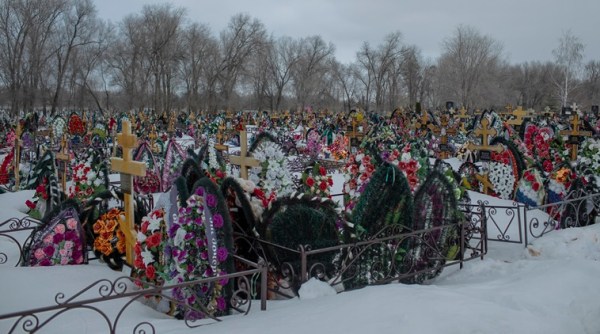 The Rubzhnoye Cemetery in Samara, Russia. (Photo: The New York Times)
The Rubzhnoye Cemetery in Samara, Russia. (Photo: The New York Times)
In February, another poll found that 60% of Russians said they were not planning to get Russia’s Sputnik V coronavirus vaccine and that most believed the coronavirus to be a biological weapon.
In the Samara region, Inna Pogozheva’s mother, an obstetrician-gynecologist, died in November after being hospitalized with a Covid-19 referral based on a CT scan. The undertakers, clad in rubber boots and hazmat suits, carried her mother from the morgue into their hearse in a sealed coffin, then doused each other in disinfectant.
But there was no word about Covid-19 on the death certificate.
Pogozheva said she did not know what to believe about the pandemic — including whether, as the widely circulating and false conspiracy theories go, the Gates Foundation might be behind it. But one thing was certain, she said: She will not get vaccinated, even after seeing COVID’s devastation up close. After all, if she cannot trust her mother’s state-issued death certificate, why should she trust the Russian government about the safety of the vaccine?
“Who the heck knows what they mixed in there?” Pogozheva said. “You can’t trust anyone, especially when it comes to this situation.”
Pogozheva is appealing to have her mother’s cause of death reinvestigated. The next of kin of a medical worker shown to have died from Covid-19 caught on the job are entitled to a special payout from the state. Kagarlitskaya, whose father was a paramedic, succeeded in having his cause of death changed to Covid-19 after her outrage went viral on Instagram and Samara’s governor personally intervened.
For all the death, there has been minimal opposition in Russia — even among Putin’s critics — to the government’s decision to keep businesses open last winter and fall. Some liken it to a Russian stoicism, or fatalism, or the lack of an alternative to keeping the economy running given minimal aid from the state.
Raksha, the demographer, noted that the elevated mortality that accompanied the chaos and poverty of the 1990s, after the collapse of the Soviet Union, was deadlier than the overall toll of the pandemic.
“This nation has seen so many traumas,” Raksha said. “A people that has been through so much develops a very different relationship to death.”
In the Samara region, according to the excess death statistics, the pandemic took the life of as many as 1 in every 250 people. Viktor Dolonko, the editor of a culture newspaper in the city of Samara, says that about 50 people he knew — many of them part of the region’s thriving arts scene — lost their lives during the pandemic. But he does not believe that Samara should have closed its theaters — currently, they are allowed to be filled to 50% of capacity — in order to slow the spread of the disease.
The deaths during the pandemic have been tragic, he said, but he believes they have mostly occurred in people who were of a very advanced age or had other health problems and were not all related to the virus. Dolonko, 62, said he wears a mask in crowded places and frequently washes his hands — and regularly goes to gallery openings and shows.
“You can choose between continuing to live your life, carefully, or to wall yourself up and stop living,” Dolonko said. “Unlike you” — Westerners — “Russians know what it means to live in extreme conditions.”
May 06: Latest News
- 01
- 02
- 03
- 04
- 05





